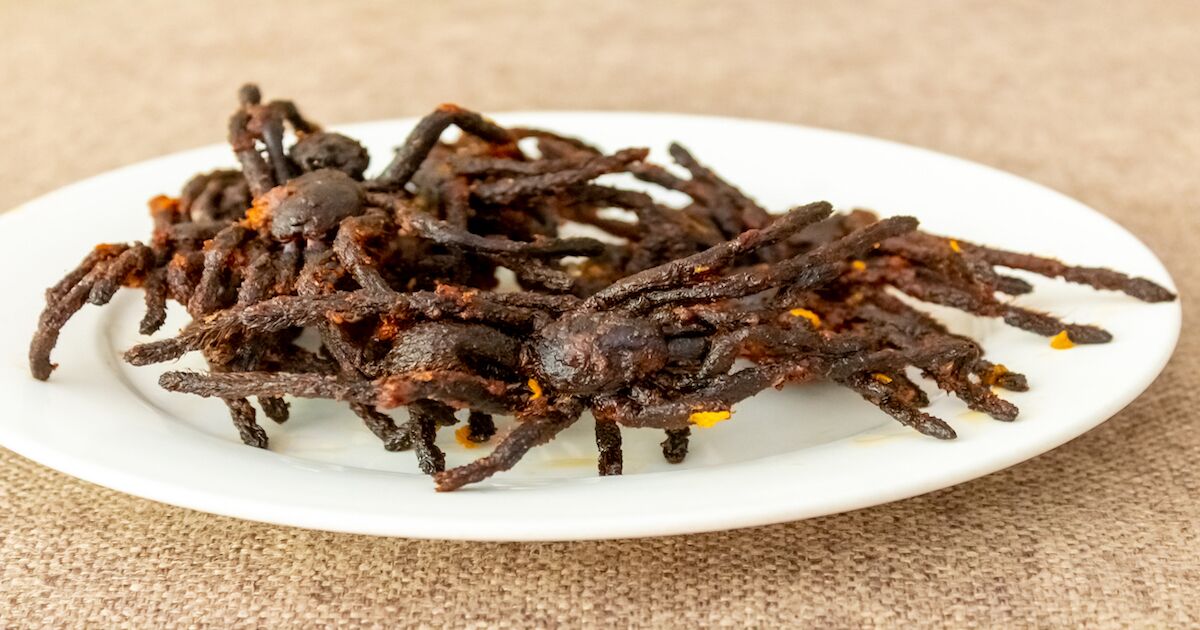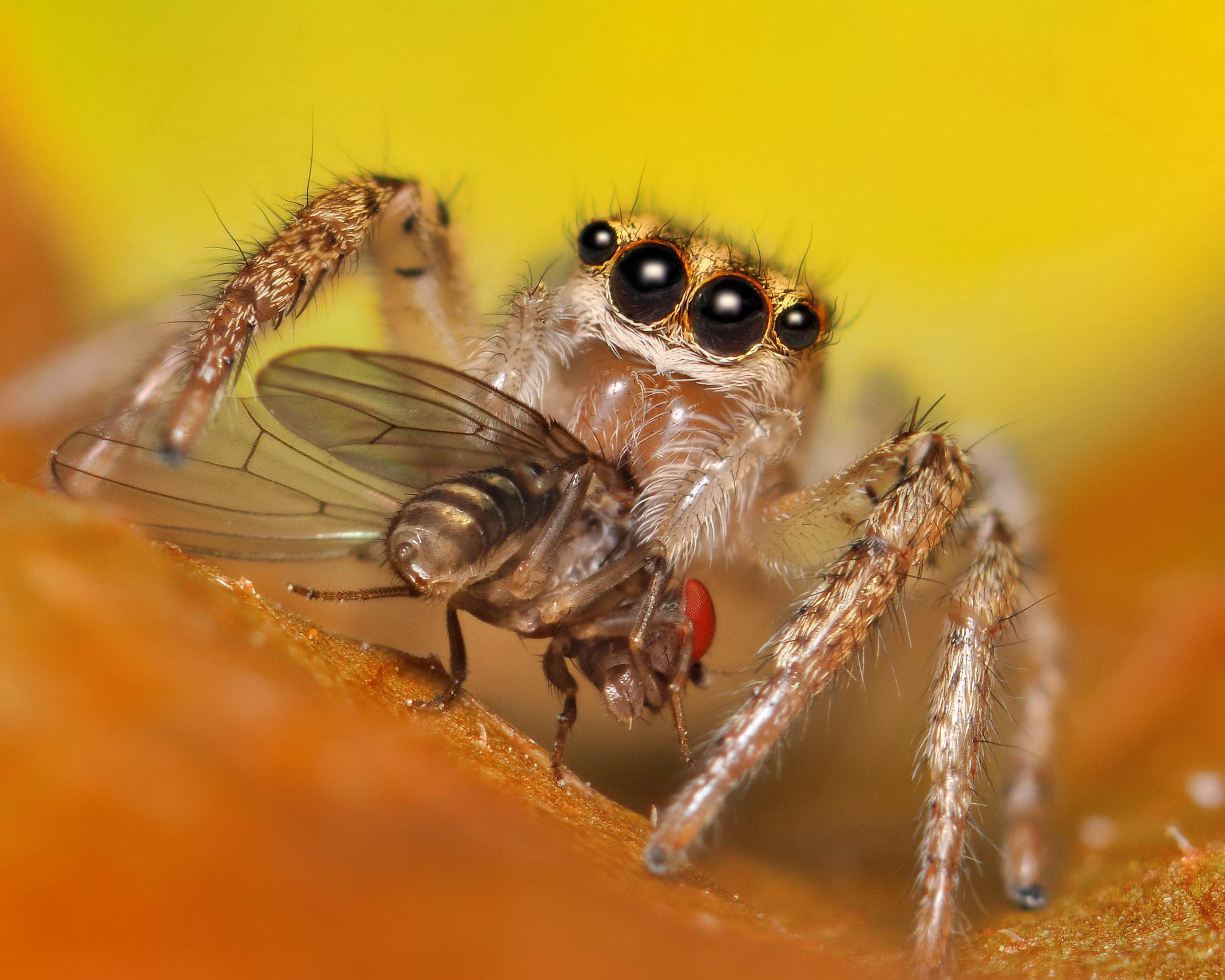Spider meals, an intriguing subject that delves into the interesting global of arachnids and their various nutritional wishes. Spiders, the eight-legged predators, eat a big selection of prey, from bugs to small animals, and their dietary possible choices have a profound have an effect on on their expansion, building, and reproductive good fortune.
Embark in this charming adventure as we discover the intricate courting between spider meals and the sophisticated steadiness of ecosystems.
On this complete information, we will be able to discover the dietary worth of several types of spider meals, delve into the inventive strategies spiders make use of to seize their prey, and read about the interesting variety of spider webs, every intricately designed to fit the spider’s explicit nutritional necessities.
Moreover, we will be able to make clear the ecological importance of spiders’ feeding conduct, revealing their an important position in controlling pest populations and keeping up the equilibrium of herbal ecosystems.
Definition of Spider Meals

Spider meals includes a various array of bugs, small animals, and different prey that spiders eat to maintain themselves.
Spiders are essentially carnivorous predators, depending on a variety of prey to satisfy their dietary wishes. Those come with:
Bugs, Spider meals
- Flies
- Mosquitoes
- Beetles
- Ants
- Grasshoppers
Small Animals
- Lizards
- Frogs
- Small rodents
- Birds
Different Prey
- Eggs
- Carrion
- Plant nectar
Dietary Worth of Spider Meals

The dietary worth of spider meals varies relying on the kind of prey fed on. Bugs, the main meals supply for many spiders, supply a wealthy supply of protein, carbohydrates, and fat. Different prey pieces, reminiscent of small vertebrates and plant topic, too can give a contribution to the spider’s vitamin and dietary consumption.
The dietary content material of the meals has a vital have an effect on at the spider’s expansion, building, and replica. A vitamin wealthy in protein helps the expansion and building of the spider’s frame, together with the manufacturing of silk. Carbohydrates supply power for the spider’s actions, whilst fat give a contribution to the manufacturing of hormones and different crucial compounds.
Insect Prey
Bugs are the commonest meals supply for spiders and supply a balanced dietary profile. They’re a wealthy supply of protein, which is very important for the expansion and building of the spider’s frame. Bugs additionally include carbohydrates, fat, and nutrients, which give power and give a boost to the spider’s general well being.
Vertebrate Prey
Some spiders, reminiscent of tarantulas, may even prey on small vertebrates, reminiscent of lizards and frogs. Vertebrates supply a better protein content material than bugs, which will give a boost to the expansion and building of bigger spiders. Then again, vertebrates can be harder to catch and subdue, so they aren’t a not unusual meals supply for many spiders.
Plant Subject
Some spiders, such because the crab spider, may even eat plant topic, reminiscent of nectar and pollen. Plant topic supplies a supply of carbohydrates, which can give power for the spider’s actions. Then again, plant topic isn’t an entire meals supply and can’t supply all the vitamins that the spider must continue to exist.
Strategies of Taking pictures Spider Meals
Spiders make use of various looking methods to seize their prey, influenced through their nutritional personal tastes and environmental stipulations.
Orb-weavers, recognized for his or her intricate webs, assemble elaborate silken traps to ensnare flying bugs. Those webs act as sticky nets, with the spider strategically situated on the hub, looking forward to prey to transform entangled.
Energetic Hunters
- Wolf spiders are agile and actively pursue their prey at the floor, depending on their velocity and stealth to seize bugs and small vertebrates.
- Leaping spiders, with their prepared eyesight, pounce on their prey from a distance, the use of their tough legs to propel themselves.
Ambush Predators
- Trapdoor spiders assemble burrows with hinged lids, looking forward to unsuspecting prey to mission within earlier than springing out and taking pictures them.
- Fishing spiders, discovered close to water our bodies, lengthen their entrance legs to shape a web, the use of it to seize aquatic bugs and small fish.
Spider Meals Webs
Spiders assemble various webs to seize their prey. The construction and serve as of those webs range relying at the spider species and its looking technique.
The kind of internet a spider builds is carefully associated with the meals it consumes. As an example, spiders that essentially feed on flying bugs, reminiscent of mosquitoes and flies, continuously construct webs with a sticky, 3-dimensional construction to lure their prey in mid-air.
Sorts of Spider Webs
| Internet Kind | Construction | Serve as |
|---|---|---|
| Orb Internet | Concentric circles with radial spokes | Traps flying bugs |
| Sheet Internet | Flat, sheet-like construction | Captures crawling bugs |
| Funnel Internet | Funnel-shaped with a retreat on the finish | Draws and traps ground-dwelling bugs |
| Tangle Internet | Abnormal, tangled mesh | Entangles flying bugs |
Have an effect on of Spider Meals at the Ecosystem

Spiders, as voracious predators, play a an important position in regulating the inhabitants dynamics of bugs and different small animals. Their feeding conduct have a cascading impact at the ecosystem, influencing the abundance and variety of more than a few species.
By way of preying on bugs, spiders cut back their numbers, fighting outbreaks that would harm vegetation and crops. As an example, in agricultural settings, spiders had been discovered to successfully keep watch over populations of pests like aphids, grasshoppers, and caterpillars, lowering the will for chemical insecticides.
Position in Controlling Pests
- Spiders eat a variety of bugs, together with agricultural pests, lowering their populations and minimizing crop harm.
- Their presence in ecosystems is helping take care of a herbal steadiness, fighting insect outbreaks and the will for over the top pesticide use.
- Spiders also are recognized to prey on different spiders, contributing to inhabitants legislation inside their very own species.
Keeping up Ecosystem Stability
- By way of regulating insect populations, spiders not directly affect the supply of meals for different animals, reminiscent of birds and reptiles.
- Spiders additionally give a contribution to nutrient biking through eating bugs and breaking down their natural topic.
- Their webs supply safe haven and habitat for more than a few small animals, improving biodiversity and ecological steadiness.
Crucial FAQs
What’s the maximum not unusual form of spider meals?
Bugs, reminiscent of flies, mosquitoes, and beetles, represent the vast majority of spider diets.
How do spiders seize their prey?
Spiders make use of quite a lot of learn how to seize prey, together with development webs, the use of sticky threads, and actively looking.
What’s the dietary worth of spider meals?
Spider meals supplies spiders with crucial vitamins reminiscent of proteins, carbohydrates, and fat, which can be an important for his or her expansion and replica.
